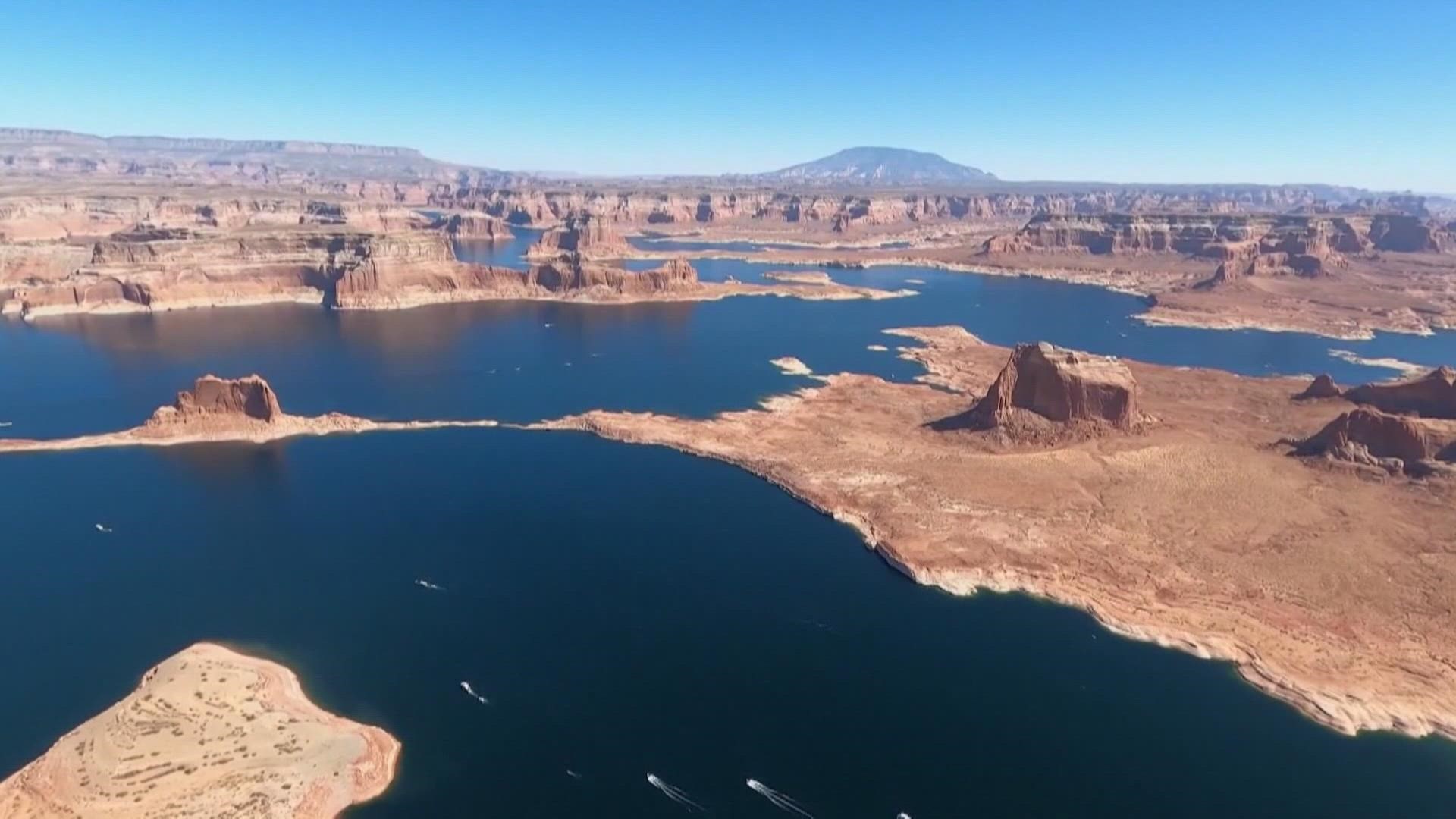DENVER — Lake Powell, on the Utah-Arizona state line, is part of a river system that supplies water to 40 million people. Much of that water originates in the mountains of Colorado and another portion comes from the Green River headwaters in Wyoming.
With an ongoing drought in the west this year, Lake Powell is forecast to drop below a level that’s set for absolute minimum operation.
The Upper Basin Drought Response Operations Agreement (DROA) identifies an elevation of 3,525 feet as a target level to take action because a level of 3,490 feet would threaten the infrastructure and hydropower resources at Glen Canyon Dam.
“We are concerned, we are watching," said Becky Mitchell, the director of the Colorado Water Conservation Board and Governor Polis's representative on the Upper Colorado River Commission. "There are significant challenges facing the Colorado River system.”
She said that two unprecedented measures are being taken to help prevent Lake Powell from hitting that critical level of 3,490 feet.
One, which has already been approved, is to move an unprecedented 500,000 acre-feet of water out of the Flaming Gorge Reservoir in northern Utah and southern Wyoming, into Lake Powell over the next 12 months.
A second proposal, which is still awaiting approval, is to withhold nearly 480,000 acre-feet of water that is scheduled to be released from Lake Powell and sent to Lake Mead.
The Department of Interior is expected to make a decision about withholding that release sometime in the next month.
Between the two solutions, Lake Powell would get nearly 1 million acre-feet of extra water for the year. That’s enough water to fill Lake Dillon – four times.
“That’s a lot, and that takes effort and creativity. It takes an all-hands-on-deck approach," said Mitchell. "Everybody considers this incredibly important and are completely focused on it.”
Mitchell said it’s a short-term fix for an immediate emergency, while they work on long-term solutions because the drought and the population are only expected to increase in the coming years.
“I have optimism because we have no choice to figure this out," said Mitchell. "There are 40 million people relying on the decisions that are being made.”
Last year, Blue Mesa Reservoir in Gunnison County contributed extra water to help fill Lake Powell, but Mitchell said all of Colorado’s reservoirs are too depleted this year to release any additional water.
Flaming Gorge was also selected to deliver additional water to Lake Powell in 2021. It contributed 125,000 acre-feet beyond its normal transfer. While Blue Mesa Reservoir in Gunnison County, Colorado, sent an additional 36,000 acre-feet.
Mitchell said that all the reservoirs in Colorado are too depleted to make extra contributions this year.
"Flaming Gorge and Blue Mesa were partially designed to help balance and supplement water supplies to Lake Powell," said Mitchell. "We now have to focus on the recovery of Colorado's reservoirs to help with the flexibility on the Colorado River system."
SUGGESTED VIDEOS: Science & Weather

